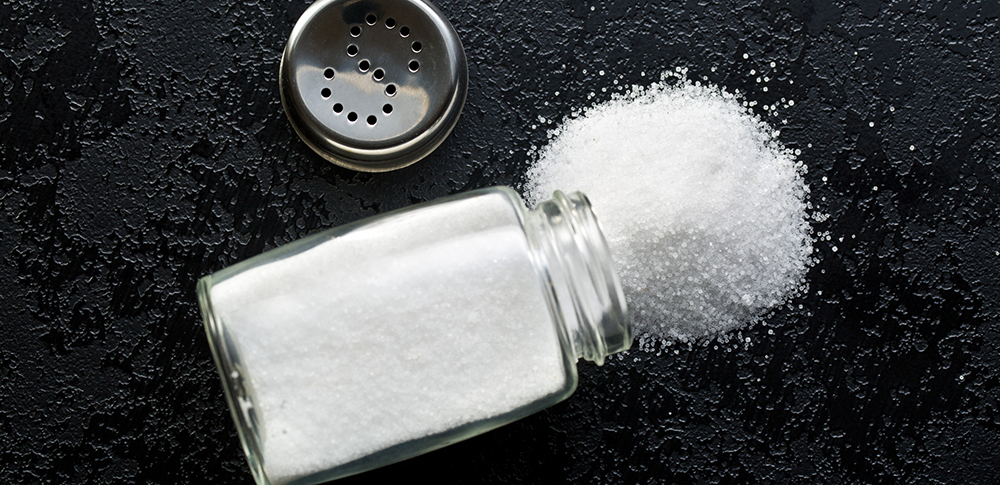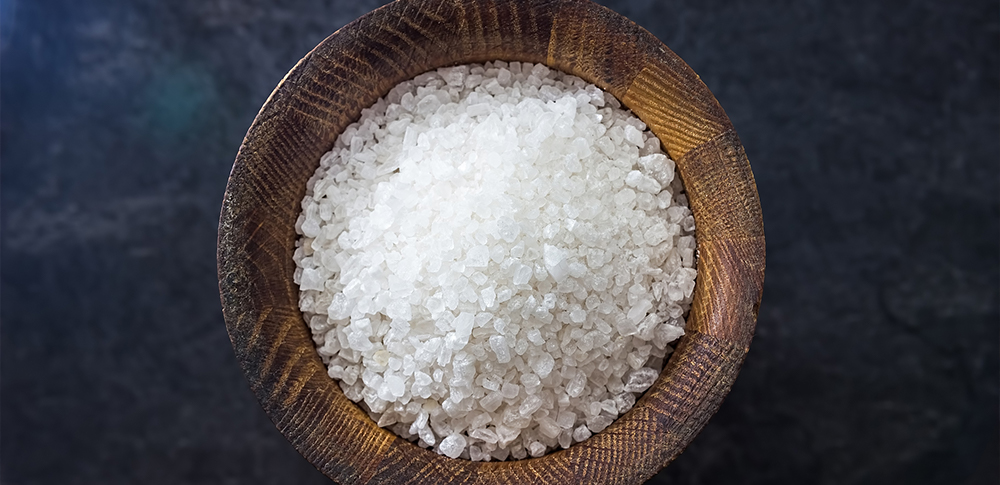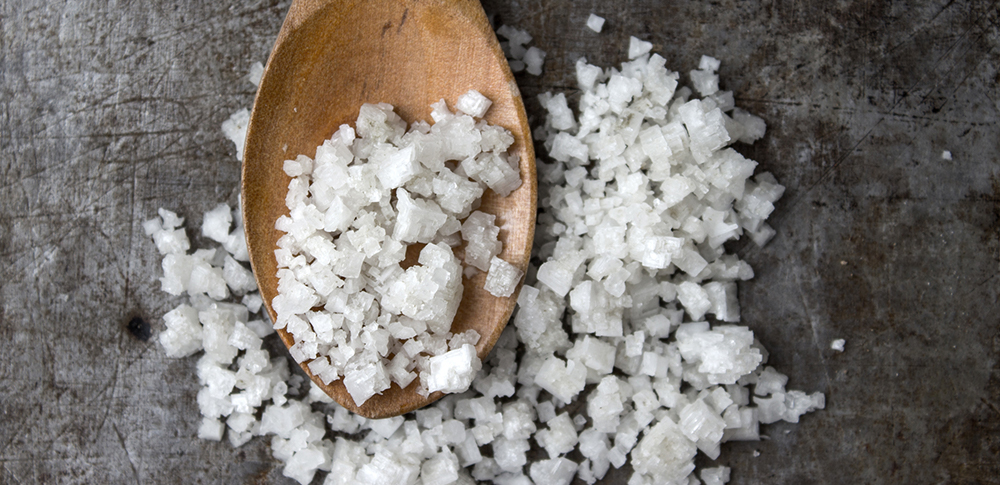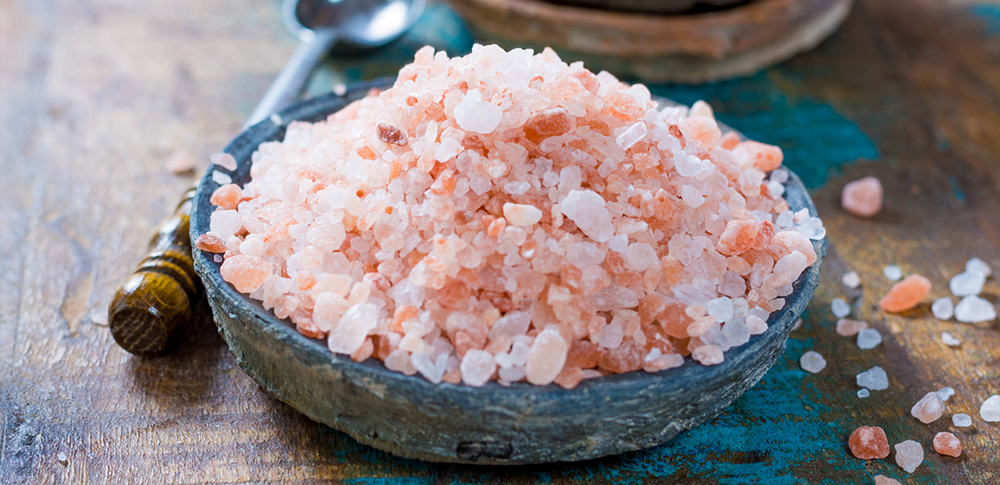Courtesy of General Wellness...by Metagenics
What’s the Difference? Table Salt vs. Sea Salt vs. Himalayan Salt & More
When you were growing up were you told to avoid oversalting your food?
Also known as sodium chloride, salt is a crystalline mineral made of 60% sodium and 40% chloride. It gets a bad rap sometimes—and there are risks to consuming too much salt—but research indicates that not eating enough salt is also a risk in itself.1
Salt intake helps the brain and nerves perform essential functions such as sending electrical impulses and maintaining fluid balance and muscle function.2 Plus, most dietary salts are harvested from mineral-rich sources including salt mines and by evaporating seawater. And, in addition to flavoring your meal, salt serves as a preservative by preventing bacterial growth.1
But what are the differences among table salt, sea salt, kosher salt, and other kinds of salts?

Regular table salt: Table salt is extracted from natural deposits and heated to 1,200° F. Since it’s crushed product, the majority of its impurities and trace minerals are removed during processing.2 One thing to note is that regular table salt often includes additives called “anticaking agents” to keep clumps from forming, so it’s not as “natural” as it may seem.
That said, food-grade table salt consists of 97% or more pure sodium chloride, and it also includes added iodine.2 If you decide not to consume iodized table salt, there are other foods that are naturally rich in iodine such as eggs, dairy, and fish, if you wish to ensure you are receiving iodine from other sources.

Sea salt: Like table salt, sea salt mainly consists of sodium chloride. Unlike table salt, sea salt is less processed and therefore much coarser. Made by evaporating seawater, sea salt contains potassium, iron, and zinc.2 Darker varieties of sea salt generally feature a higher concentration of impurities and trace minerals, which can affect the taste of the salt but not necessarily its nutrient value.
While many nutritionists favor sea salt because it’s less refined, ocean pollution has led to the addition of trace amounts of heavy metals and microplastics. Some believe the risks of microplastics in foods are relatively low at current levels, but more research is needed to confirm this.3

Celtic salt: Celtic salt is fairly coarse and sourced from French tidal pools. It features a briny flavor, and since it’s denser and moister than table salt, it can be used more sparingly. Its gray color is the result of being allowed to touch the bottom of the pan during harvest.
Celtic salt also includes trace amounts of minerals such as magnesium, iron, manganese, zinc, iodine, and potassium, and it has less sodium than regular table salt. Its gray color is the result of those trace elements. Celtic salt is related to fleur de sel, which translates to “flower of the salt” and is quite popular in cooking, although fleur de sel boasts a more complicated harvesting process.

Kosher salt: Many recipes include kosher salt because it’s coarse and dissolves quickly. Often used in traditional Jewish cuisine, which requires that blood be removed from meat, kosher salt is absorbent and good at extracting liquid.
Like table salt, kosher salt is mainly sourced from natural deposits, although it may also come from seawater. It’s worth noting, though, that a tablespoon of kosher salt weighs significantly less than a tablespoon of regular table salt—and that kosher salt features a larger flake size. In addition, kosher salt does not contain iodine.2

Himalayan pink salt: Sourced by hand in Pakistan from the second-biggest salt mine in the world, Himalayan salt offers a unique color and flavor. Trace amounts of iron oxide, or rust, account for its vibrant hue. This salt type also includes minerals such as calcium, iron, magnesium, potassium, and many others.2
Himalayan pink salt is lower in sodium than regular table salt and considered one of the purer salt varieties.2 While it may contain some iodine, it’s usually less than what is found in iodized salts.4
Of course, the different types of salts mentioned above aren’t the only ones available. Hawaiian salt, Persian salt, and smoked salt are other forms of dietary salts. And while different types of salts contain different amounts of trace minerals, there are generally few other nutritional variances.2
Benefits and nutrition recommendations
The body needs a certain level of salt to function. Since sodium helps our cells retain water, which, in moderation, ultimately keeps blood pressure in a healthy range, it’s important that we do our due diligence and consume enough of the stuff.
The benefits of moderate salt consumption are certainly relevant. Sodium ensures we have enough fluids to maintain our cellular function, helps us contract and relax our muscles, and promotes brain health by helping our nerve cells communicate.5 And, as discussed, iodized salts and salts that naturally contain iodine—which is considered an essential mineral.
How can we tell whether we’re getting enough iodine? In the US, iodized salt contains 45 micrograms of iodine per gram of salt.3 The recommended daily amount of iodine is 150 micrograms for most adults—about ½ to ¾ teaspoon of regular table salt—and research reveals that most Americans consume enough iodine through their diets alone.6
But how much salt is too much? The 2015 to 2020 Dietary Guidelines for Americans suggest that people cap their sodium intake at 2,300 milligrams per day.7 This translates to roughly 1 teaspoon of regular table salt daily. (Those with high blood pressure should limit their sodium intake to 1,500 milligrams per day.)1 According to the National Heart, Lung, and Blood Institute, 500 milligrams is a safe daily minimum sodium intake for most populations.8
Managing salt intake
People over the age of 50, as well as those with diabetes or elevated blood pressure, are more susceptible to health risks associated with high sodium intake.9 To this end, a diet that includes too much salt may increase the risk of contracting the following health conditions:1
- High blood pressure
- Cardiovascular disease
- Stroke
- Kidney disease
- Liver damage
- Osteoporosis
Almost 80% of the sodium in most Americans’ diets comes from processed or packaged foods such as frozen meals, condiments, and sodas.10 To manage your salt intake, consider exploring the different salt types outlined in this post, and start cooking with the ones that appeal to you most.
Use these salts sparingly—but by cooking with salt instead of buying salt-laden packaged foods, you’ll be better-equipped to control your sodium intake. You might also consider these tips:
- When you go out to eat, request that the restaurant staff prepare your meal with little or no salt.
- Focus on salt-free snacks. If you’re choosing between two brands, select the chips or crackers that don’t include added salt.
- Read and compare labels before you purchase items like soups and deli meats. Many of these products are surprisingly full of salt.
- Add herbs and spices to your pantry. They’ll add flavor without raising blood pressure, and many of these ingredients offer anti-inflammatory benefits.11
References
- Palsdottir H. Salt: Good or Bad? Healthline. https://www.healthline.com/nutrition/salt-good-or-bad. Accessed January 28, 2019.
- Gunnars K. Types of Salt: Himalayan vs Kosher vs Regular vs Sea Salt. Healthline. https://www.healthline.com/nutrition/different-types-of-salt. Accessed January 28, 2019.
- Karami A et al. The presence of microplastics in commercial salts from different countries. Sci Rep. 2017;7:46173.
- Leonard J. Does pink Himalayan salt have any health benefits? Medical News Today. https://www.medicalnewstoday.com/articles/315081.php. Accessed January 29, 2019.
- Tremblay S. The Advantages and Disadvantages of Sodium for Nutrition. SFGate. https://healthyeating.sfgate.com/advantages-disadvantages-sodium-nutrition-5640.html. Accessed January 29, 2019.
- Torborg L. Mayo Clinic Q and A: Sea salt and sufficient iodine intake. Mayo Clinic. https://newsnetwork.mayoclinic.org/discussion/mayo-clinic-q-and-a-sea-salt-and-sufficient-iodine-intake/. Accessed January 29, 2019.
- U.S. Department of Health and Human Services and U.S. Department of Agriculture. Dietary Guidelines for Americans 2015-2020. https://health.gov/dietaryguidelines/2015/guidelines/. Accessed January 28, 2019.
- Institute of Medicine (US) Committee on Strategies to Reduce Sodium Intake. Strategies to Reduce Sodium Intake in the United States. Washington (DC): National Academies Press (US); 2010. Appendix B, Government Initiatives and Past Recommendations of the National Academies, the World Health Organization, and Other Health Professional Organizations.
- The Nutrition Source Staff. Health Risks and Disease Related to Salt and Sodium. Harvard University T.H. Chan School of Public Health. https://www.hsph.harvard.edu/nutritionsource/salt-and-sodium/sodium-health-risks-and-disease/. Accessed January 29, 2019.
- Thomas G. Do You Know Where Salt Is Hiding in Your Food? Cleveland Clinic. https://health.clevelandclinic.org/know-salt-hiding-food/. Accessed January 28, 2019.
- Cleveland Clinic Staff. Do Sea Salt, Kosher Salt and Pink Salt Beat Table Salt? Cleveland Clinic. https://health.clevelandclinic.org/do-sea-salt-kosher-salt-and-pink-salt-beat-table-salt. Accessed January 28, 2019.